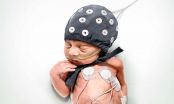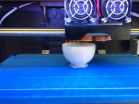(Press-News.org) Cough treatments could change dramatically after the herpes virus helped researchers discover that the respiratory tract links to two different parts of the nervous system.
A research team led by The University of Queensland's Dr Stuart Mazzone made the important breakthrough after setting out to learn more about the triggers behind excessive coughing.
"Different physical sensations arise from the upper and lower respiratory tracts in people with respiratory diseases," said Dr Mazzone, from the School of Biomedical Sciences.
"The irritating sensations from the upper respiratory tract are a major driver of excessive coughing.
"Cough hypersensitivity is a debilitating symptom of more than 100 respiratory diseases, yet cough-suppressing treatments generally don't work."
Team member Dr Alice McGovern said the research team co-opted a specific strain of herpes virus, because of its ability to travel through the nervous system.
"Tracking this virus allowed us to understand the mechanisms behind the different respiratory sensations," Dr McGovern said.
"It provided detailed information about nerve circuits in the upper airway region where ticklish and irritated throat sensations arise.
"By adding a fluorescent protein to the virus we were able to trace its movement from the respiratory system to the higher brain centres that encode sensations."
Using this novel technology, developed by Dr McGovern, the researchers discovered a fundamental difference between sensory neural pathways arising from the upper airways and those from the lungs, where such sensations are more difficult to distinguish.
"Previously it was assumed that the two respiratory circuits' nervous systems were identical," Dr Mazzone said.
"The fluorescent viral tracings show they are in fact quite different.
"The tracings revealed the upper airway region of the throat had heavy inputs of sensory neurons into a branch of the nervous system that enables very precise sensations to be felt.
"From the lower pulmonary lung area however, the sensory neurons project into a different branch of the nervous system that controls general emotions and feelings.
"This seems to account for the difference between precise sensations, such as the itchy feeling in the throat that evokes coughing, and the more generalised sensations felt in the lower lung region during respiratory illness."
Dr Mazzone said important treatment implications would flow from the new understanding that there were two types of nervous systems in the respiratory circuit.
"Treatment for relief of upper airway inflammation that leads to cough hypersensitivity will need a different approach to lower airway discomfort because the processes in the neural components are not the same," he said.
"We know from our other studies that specific brain regions appear to be activated by the excessive upper airways sensory neuron activity.
"The next stage of our research will be to try to identify new therapies for cough hypersensitivity, which can either supress the sensory neurons themselves or combat the excessive brain activity they produce."
INFORMATION:
The research is published in The Journal of Neuroscience May 6, 2015.
Media: Dr Stuart Mazzone, +61 7 3365 1074, s.mazzone@uq.edu.au, or Lynda Flower, +61 7 3365 1536, l.flower@uq.edu.au.
Polymer solar cells are a hot area of research due to both their strong future potential and the significant challenges they pose. It is believed that thanks to lower production costs, they could become a viable alternative to conventional solar cells with silicon substrates when they achieve a power conversion efficiency--a measure that indicates how much electricity they can generate from a given amount of sunlight--of between 10 and 15 percent. Now, using carefully designed materials and an "inverted" architecture, a team of scientists has achieved efficiency of 10 percent, ...
Giant strides have been taken in the early care of very premature infants in postnatal intensive care units during the past two decades. Doctors can now support the function of especially the lungs, heart and the circulatory system so as to guarantee the survival of most of even extremely premature infants.
Despite a good start, many of these may still have lifelong problems with brain function, such as attention deficit disorders or difficulty with visual function. For this reason, the primary focus of developing care for premature infants has been on securing brain ...
HANOVER, N.H. - If you're a college student wondering how your study and party habits will affect your GPA, wonder no longer. Dartmouth researchers and their colleagues have built the first app that automatically predicts college students' grade point average based on their smartphone data.
The findings offer new ways to improve students' performance, providing real-time feedback on their studying, partying, sleeping, exercising and other conscious and unconscious behaviors to help them stay on track academically.
Dartmouth computer science Professor Andrew Campbell, ...
BLOOMINGTON, Ind. -- Air pollution regulations issued by the U.S. Environmental Protection Agency are estimated to save thousands of lives annually. A new study by researchers at Indiana University says these estimates are more uncertain than commonly believed.
Researchers Kerry Krutilla, David H. Good and John D. Graham of the IU School of Public and Environmental Affairs analyzed the costs and expected lifesavings of nine regulations issued between 2011 and 2013. The bulk of these regulations require national emissions standards for hazardous air pollutants. The analysis ...
PITTSBURGH, May 26, 2015 - Researchers at the University of Pittsburgh School of Medicine have identified two new classes of RNAs that are closely associated with a protein known to be a prognostic biomarker for breast cancer and could play a role in progression of prostate cancer. Their findings were published in the June issue of the scientific journal RNA.
Levels of human Y-box binding protein 1 (YB-1), which is involved in many cellular functions, have been shown to correlate with drug resistance and poor patient outcomes in a variety of cancers. The observation that ...
When Walt Disney created Mickey Mouse, he didn't give much thought to how he might bring his character to life in the real world. But robotics now puts that possibility within reach, so Disney researchers have found a way for a robot to mimic an animated character's walk.
Beginning with an animation of a diminutive, peanut-shaped character that walks with a rolling, somewhat bow-legged gait, Katsu Yamane and his team at Disney Research Pittsburgh analyzed the character's motion to design a robotic frame that could duplicate the walking motion using 3D-printed links and ...
College Park, Md and Annapolis, Md -- A new study from researchers at the University of Maryland (UMD) and the National Socio-Environmental Synthesis Center (SESYNC) demonstrates that the highly contentious debate on climate change is fueled in part by how information flows throughout policy networks.
The UMD and SESYNC researchers found that "echo chambers"--social network structures in which individuals with the same viewpoint share information with each other--play a significant role in climate policy communication. The researchers say that echo chambers may help ...
Ask any molecular plant biologist about RNA extractions and you might just open up the floodgates to the woes of troubleshooting. RNA extraction is a notoriously tricky and sensitive lab procedure. New protocols out of the University of Florida are quicker, more effective, and more reliable than previous methods.
"Obtaining pure and intact RNA samples is essential for sequencing the active genes, or the transcriptome, of a plant," explains botanist Ingrid Jordon-Thaden, who developed the protocols.
The protocols are given in bench-ready form with detailed notes and ...
Adam C. Levine, M.D., an emergency medicine physician at Rhode Island Hospital found that the World Health Organization's current weight-based guidelines for assessing malnutrition in children with diarrhea are not as reliable as measuring the child's upper arm circumference. His research was published in the Journal of Nutrition.
Diarrhea is common among children who visit health facilities in developing nations. The traditional measures for determining whether a child is moderately or severely malnourished are based on assessing the child's weight directly. Levine found ...
Old-school field work meets cutting-edge technology! For decades, researchers have been making artificial eggs out of plaster, wood, and other materials to test how birds identify and reject the eggs that invading "brood parasites" sometimes sneak into their nests. But these methods have many limitations, and a new study published in the open-access journal PeerJ is the first to test the usefulness of 3D printed eggs for research on egg rejection.
Brood parasites are birds that don't build nests of their own. Instead, they slip their eggs into the nests of other species, ...


